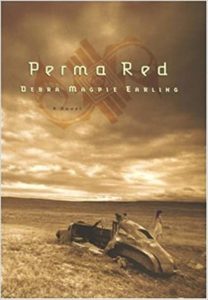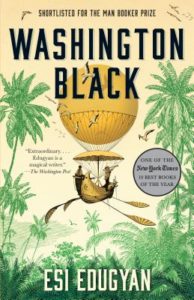Having grown up in a remote and forgotten place myself—surrounded by uninhabited forest wilderness punctuated by lawlessness and constantly-looming male threat—I find myself always reaching for novels where settings of the remote or the forgotten are driving forces, inhabiting the story as much as the characters, shaping the story’s emotional tenor, functioning as the story’s beating heart. Remote settings often demonstrate both intense beauty and intense hardship, highlighting everything in society over which we both celebrate or despair. These are places that inform who we are as humans, and also who we might become.
Portrayed by writers for whom these kinds of places matter, writers who know intimately and intuitively the truth of such places—the flora and fauna, the natural phenomena, all the embedded human dramas—settings of the remote/forgotten often function as fulfilling main characters themselves. I often find these kinds of settings the richest and most satisfying as a reader, and also the most inspiring as a writer. In my own fiction, I can’t even conceptualize a story without knowing, intimately, its place of being, and the places that inhabit my work have everything to do with who the characters are and what the characters do. The following ten novels fulfill all the promise settings of the remote or forgotten have to offer to compelling and diverse women-authored fiction:
Washington Black, Esi Edugyan
Set on a Barbados sugar plantation in 1830 and then moving to the frozen Far North, with stops in London and Morocco as well, this novel’s settings are as dynamic as its characters, surprising both in their breadth and depth, and the sheer exuberance of their brutality and beauty. The settings and characters that unwind in this novel—spooling out into disaster and completion—are both airily fantastical as well as deeply grounded to the earth and frozen tundra. The extreme nature of place reflects back onto the characters and informs who they are and what choices they make in a breathtaking, rollicking ride.

Perma Red, Debra Magpie Earling
Set on Montana’s Flathead Reservation in the 1940s, this lyrical novel explores the heart of the stark Montana landscape with characters and events that have stayed with me vividly over a decade-and-a-half after I first read it. The sensory detailing of the natural world is exquisite, conjuring the place so fully you feel it as deeply as your own experience and that of the characters as well. Gritty, horrific, gorgeous, haunting, and deeply-wrought portrayals of a place and the people within it make for a kind of rare magic that embodies the land and the characters of the land, making this novel have universal lasting power.
Housekeeping, Marilynn Robinson
Set in the fictional north-Idaho town of Fingerbone, this novel is close to home and heart for me. Exploring the way place shapes both who we are and who we become, the setting is full-bodied and rich with description, steadily building upon its own presence, propelling the character movement and the characters’ experiences within their world. All the iterations of identity-via-place are present here: place as a way of being, place as a way of understanding all the versions and expressions of self a person can embody, place as a way of moving through the world. This is perhaps one of the most fulfilled place-as-emotion novels I’ve ever read, with deep character complexity and self-actualization.
Everything I Never Told You, Celeste Ng
Set in 1977 small-town Ohio, this novel’s setting isn’t remote, but it is one of the forgotten, the ignored, the overlooked, and the very nature of that informs not only the world within the place, but the characters who move through it. The very static domestic characteristics that define the setting are precisely what leave the reader full of tension and dread and propel the story into its fulfillment. A sneakily impactful “normal” setting, the place in this novel creeps into your very being, becoming as haunting as its characters.
Where the Crawdads Sing, Delia Owens
Set along the isolated coastal marsh of North Carolina in 1952–1969, this novel explores the natural world in a deeply satisfying and elemental way, with the place itself serving as a main character as much as the humans that inhabit it. A delightful examination of the North Carolinian coastal marsh’s flora and fauna fill the pages along with the human-driven dramas, each informing and enriching the other, moving together all the way to the end. Not many novels convey place in such an achingly powerful and fulfilled way.
Salvage the Bones, Jesmyn Ward
Set in the fictional Mississippi Gulf town of Bois Sauvage in the days leading up to Hurricane Katrina, this intense and potent novel explores facets of Southern life and culture in a way that stays with the reader, making a deep and lasting impact. The dogs alone that inhabit this place are some of the most potent non-human characters I’ve ever encountered. The novel’s setting and situation and characters play back and forth off of each other, propelling the reader on a gritty, full-bodied, southern ride.
Women Talking, Miriam Toews
Set in the fictional Mennonite colony of Molotschna, this haunting novel was inspired by events that took place from 2005-2009 in the Manitoba Colony—a Mennonite community in eastern Bolivia. The setting is as cloistered and claustrophobic as the events that take place, making the reader want to escape even more than the women who have been preyed upon. The setting fully captures and demonstrates just how dark and terrifying “domestic” country life can be.
The Plague of Doves, Louis Erdrich
Set on North Dakota’s Ojibwe Reservation and its border town, Pluto, this novel spans nearly a century and begins with the gruesome murder of a farm family in 1911. The setting informs the characters, and the characters inform the setting until there seems to be no separation between the two. The description, characterization, and movement of this novel make the empty expanses of its setting full to brimming. So many of the novel’s descriptions of the land and characters who live there are so vividly drawn that long after I finished the book, its scenes played out in my head like photographs pasted on photo album pages.
Homegoing, Yaa Gyasi
Set along Ghana’s coastal Fanteland in the mid-1700s, and then moving through generations from the Gold Coast to Mississippi plantations, the American Civil War to Jazz Age Harlem, this novel explores place and culture and belonging in deeply important ways, particularly in terms of the memory of captivity and the legacy of slavery from past to present. Place and human experience in place drive the stories home. The opening scenes of coastal Ghana make a particularly potent impact, vividly bringing to life scenes and situations that shape all the narrative to come.
Idaho, Emily Ruskovich
Set between 1973 and 2025 in northern Idaho, this is another close-to-my-heart home-territory novel for me—specifically the forested mountains and small towns that shape the atmosphere of the northern-half of the state. The crime, the characters, the narrative’s movement all stem from isolation and desperation, the setting shaping and fulfilling the role of the people within it. When I read this novel, I immediately recognized the deep, elemental truth of its setting and situation: from the mountainous, timbered landscape to the firewood gathering; from the cloistered isolation to the dark, driving forces of despair and loss—this is a place I know, captured and reflected on each page.
*



























